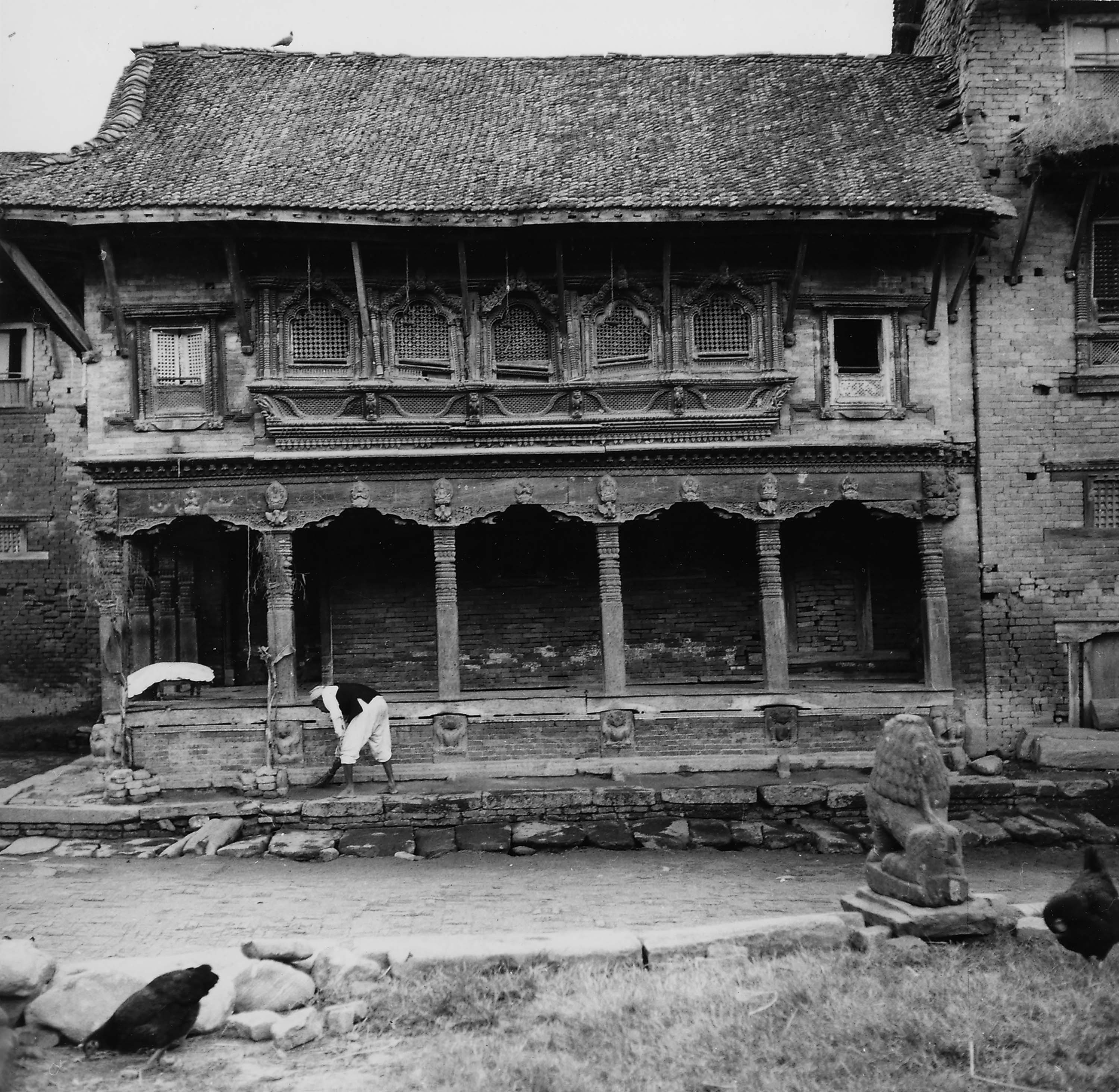Dhũllā Sataḥ, Sankhu

Dhũllā Sataḥ used to stand at the three-way intersection in the centre of the Dhũllā Ṭola before it partly collapsed in the 2015 earthquakes and its superstructure was dismantled shortly thereafter. Today only remnants of the foundation plinth and a few carved base stones representing lions remain on the overgrown site. The salvaged wooden elements of the Sataḥ, which include columns, capitals and window frames, are stored in a metal shed nearby. The earliest images of the rest house taken by Werner Jacobsen in the 1950s show the building in its original configuration: four carvings of Garuḍa can be seen attached to the centres of the capitals and nine carved wooden statues of unidentified deities are installed on the front face of the main beam. By 2014, all these statues had disappeared.
The historic trade route linking Kathmandu with Tibet used to cross through Sankhu. Horse caravans laden with goods often stopped there for an overnight stay. The traders were allowed to use the Dhũllā Sataḥ for accommodation and the horses were tied to large stones in front of the Sataḥ. Such stones with holes in them, can still be seen there.
A guthi related to the Dhũllā Sataḥ is still in operation. The members of the Guthi claim that their ancestor, Jaya Śaṅkara, built the Sataḥ some four hundred years ago. There is no other information available regarding Dhũllā Sataḥ's age but the patterns and designs of woodcarvings also suggest a construction date in the late 17th century. Jaya Śaṅkara belonged to the influential Mehera Śreṣṭha clan that was responsible for the construction of many monuments in Sankhu. A ledger from 1916 states that it was the Guthi's responsibility for taking care of the Dhũllā Sataḥ and renovating it when required. Elders recall a portion of the Sataḥ’s roof collapsing in the 1934 earthquake. At that time, Guthi members managed to carry out repairs within a few months.
In those days, the Guthi received income from landholdings that made regular repairs and maintenance of buildings like this possible. However, since this land is no longer under the Guthi's ownership it has been become difficult to raise the necessary funds. The failure in arranging a regular income for the timely maintenance of the Sataḥ coupled with most of the Guthi members moving out of Sankhu had left the rest house in a state of disrepair. Around 2010 a portion of the roof collapsed and parts of the central window fell off. It wasn't till mid-2012 that the Guthi covered the damaged portion of the roof with corrugated metal sheets, but unfortunately, the windows were never repaired. Despite the Sataḥ's importance and high artistic value, no more efforts went into maintenance and its condition deteriorated further, resulting in its collapse. Following the dismantling of the Sataḥ in 2015, the Department of Archaeology initiated the administrative process for the reconstruction. However, this effort was abandoned due to a dispute over the Sataḥ’s ownership. Because the Sataḥ was never fully assigned to public ownership, now private individuals are claiming ownership so that they can use the land.
For more information about Dhũllā Sataḥ, please visit DANAM.
